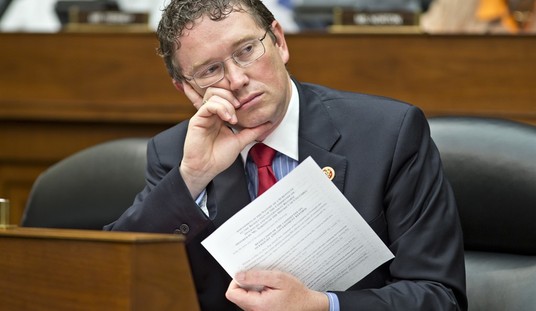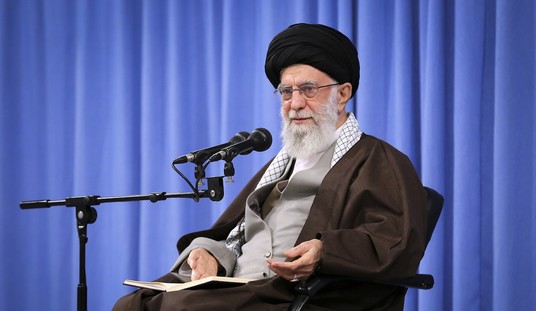In fairness, Philip Bump treats this more kindly than he should in calling Joe Biden’s infrastructure proposal “Biden politics at its purest.” Bump gives an approving gloss on Biden’s “expansive” use of the word infrastructure, while objecting to the political nature of criticisms over that expansive redefinition. However, in pointing all this out, Bump makes the sotto voce case that Biden has basically wrapped up decades of Democratic hobby horses and slapped the word “infrastructure” on it.
Oh, and Bump also coined a useful word as well — “infrasandwich.” It beats “s*** sandwich,” which is what this bill actually is:
In Pittsburgh on Wednesday, President Biden threw his bridge into the ring. He formally announced the American Jobs Plan, a $2 trillion proposal that would spend billions on improving roads and airports, overhauling water and energy systems and bolster economic and caregiving systems. It’s an expansive interpretation of the word “infrastructure,” certainly, leading quickly to criticism from Republicans.
Gov. Kristi L. Noem (R-S.D.) disparaged Biden’s infrasandwich in a Fox News appearance.
“I was shocked by how much doesn’t go into infrastructure,” she said of the proposal. “It goes into research and development. It goes into housing and pipes and different initiatives, green energy. And it really is not an honest conversation we’re having about what this proposal is.”
While praising the politics of the initiative, Bump essentially argues that Biden is playing a bait-and-switch campaign. All he’s really done is relabel the Green New Deal:
The White House’s approach was almost guaranteed to result in Noem-like complaints. It’s intentionally expansive in its aims, hoping to reshape and reinforce the country’s underpinnings in a way that extends beyond simply the much-loved “crumbling roads” of political legend.
What it is, really, is the Green New Deal.
That may be why Republicans are pointing all this out in their criticisms. Americans want more investment in infrastructure, which has a fairly specific meaning to them — roads and bridges, certainly, but also power grids, sewer systems, water treatment, and the utilities that make modern life possible. Those aren’t just crumbling in “legend,” after all, but in reality in some places.
Also in reality, only a small percentage of Biden’s proposal addresses those issues. The rest of it, as the Wall Street Journal more honestly assesses, is the return of Biden’s big-government and nanny-state dreams:
Most Americans think of infrastructure as roads, highways, bridges and other traditional public works. That’s why it polls well, and every President has supported more of it.
Yet this accounts for a mere $115 billion of Mr. Biden’s proposal. There’s another $25 billion for airports and $17 billion for ports and waterways that also fill a public purpose. The rest of the $620 billion earmarked for “transportation” are subsidies for green energy and payouts to unions for the jobs his climate regulation will kill. This is really a plan to build government back bigger than it has ever been.
The magnitude of spending is something to behold. There’s $85 billion for mass transit plus $80 billion for Amtrak, which is on top of the $70 billion that Congress appropriated for mass transit in three Covid spending bills. The money is essentially a bailout for unions, whose generous pay and benefits have captured funds meant for subway and rail repairs. …
Note the political irony of all this. Mr. Biden says “public investment” has fallen as a share of the economy since the 1960s, and he has a point. But the main reason is that government spending on social welfare, entitlements and public unions have squeezed out public works. Now he’s redefining social welfare as public works to drive more social-welfare spending, which will further crowd out money for public works and government R&D to compete against China.
Lastly, Politico reports today that Biden’s massive big-government bonanza certainly has had a stimulating effect on one industry … lobbying:
The White House’s rollout of the biggest infrastructure package in at least five decades has sparked a lobbying frenzy in Washington, a mad dash among lawmakers and lobbyists to weigh in on the legislation and sway the Biden administration to include their pet projects or exclude the corporate tax hikes they don’t want to pay. The early jockeying for influence over the plan portends a fierce debate about the details that could last much of the year, if not longer.
Veteran lobbyists said the package could spark the most intensive lobbying effort in history, dwarfing the efforts to shape President Barack Obama’s stimulus bill in 2009, President Donald Trump’s tax overhaul in 2017 and even the massive relief bills passed during the pandemic.
“It will make the American Rescue Plan basically pale in comparison,” said Arshi Siddiqui, a former aide to House Speaker Nancy Pelosi who’s now a lobbyist at Akin Gump Strauss Hauer & Feld, referring to the Covid-19 relief package Biden signed only in March.
That’s not an accident. That’s by design. Rather than stick to real infrastructure needs, Biden wants to use this bait-and-switch to aggrandize power within the Beltway and make everyone more dependent on grants from lawmakers. It is precisely on the same curve as Biden’s entire political career, including his record on honesty and transparency.








Join the conversation as a VIP Member